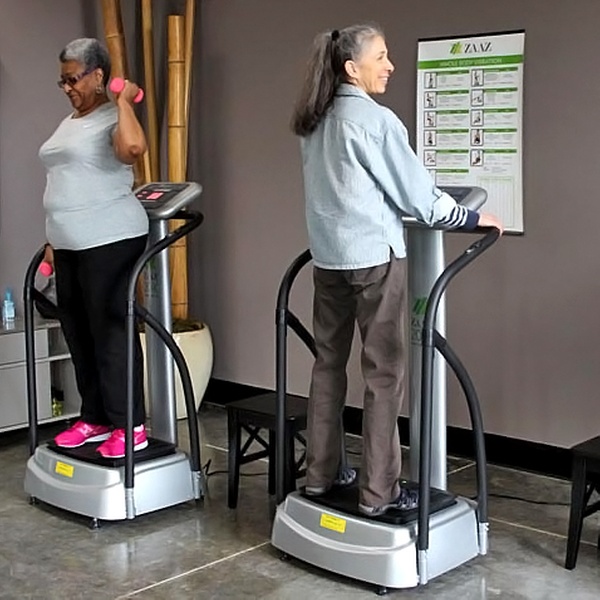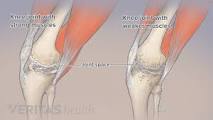
Recently Diagnosed or Relapsed? Stop Looking For a Miracle Cure, and Use Evidence-Based Therapies To Enhance Your Treatment and Prolong Your Remission
Multiple Myeloma an incurable disease, but I have spent the last 25 years in remission using a blend of conventional oncology and evidence-based nutrition, supplementation, and lifestyle therapies from peer-reviewed studies that your oncologist probably hasn't told you about.
Click the orange button to the right to learn more about what you can start doing today.
- You are here:
- Home »
- Blog »
- non-conventional therapies »
- Myeloma – Knee Arthritis, AVN, Whole-body Vibration
Myeloma – Knee Arthritis, AVN, Whole-body Vibration

“Meta-analysis showed that low-frequency and high-frequency whole-body vibration had additional positive effects compared to strengthening exercises alone on bone strength, knee extensor muscle strength, and physical function in individuals with knee OA.”
Maintaining bone strength is a lifelong goal for myeloma survivors. I have found whole-body vibration use to be an important therapy to maintain my bone mineral density, joint health, etc.
I was diagnosed with multiple myeloma in early 1994. I underwent several years of aggressive chemotherapy from ’94-’96. Among other long-term and late stage side effects caused by high-dose chemotherapy and radiation, I was diagnosed with knee osteoarthritis (KOA) in 2015. I believe both my KOA and avascular necrosis was caused by high-dose steroids but that’s another blog post.
Joint damage is a well-documented side effect of high-dose steroids. For many reasons, I have chosen not to undergo major surgery or other standard-of-care therapies to manage joint pain and joint damage.
Therefore, the studies linked and excerpted below outline my long-term therapy plan for my current joint damage aka knee and shoulder.
- Whole-body Vibration
- Curcumin
- Omega-3 Fatty Acids
- Acupuncture
- Low-impact exercise
And here is the kicker. I do everything above for other problems as well. Or I should say that I have been doing all the therapies above for my cancer, my heart/BP/afib, bladder, etc. for years now.
And it looks as though I will be doing these evidence-based non-conventional therapies for years to come. Probably for the rest of my life.
To learn more about evidence-based non-conventional therapies, scroll down the page, post a question or a comment and will reply to you ASAP.
Thanks,
David Emerson
- MM Survivor
- MM Cancer Coach
- Director PeopleBeatingCancer
The Effects of Whole-body Vibration Therapy on Knee Osteoarthritis: A Systematic Review and Meta-analysis of Randomized Controlled Trials
“INTRODUCTION: Knee osteoarthritis is a leading cause of disability and medical costs. The effect of whole-body vibration is still controversial in knee osteoarthritis. The aim of this study was to assess the effects and safety of whole-body vibration on pain, stiffness, physical function, and muscle strength in patients with knee osteoarthritis…
RESULTS: Fourteen randomized controlled trials involving 559 patients with knee osteoarthritis met the inclusion criteria…
One study showed negative effects of WBV on knee osteoarthritis. The duration of WBV treatment ranged from 4 to 24 weeks. Meta-analysis revealed that WBV with strengthening exercises has a significant treatment effect in pain score..
Both low-frequency (10-30 Hz) and high-frequency (30-40 Hz) WBV were associated with significant changes in pain, physical function, and knee extensor strength (p<0.05). WBV was not associated with significant changes in stiffness, balance ability, quality of life, and knee flexor strength. No adverse events were reported.
CONCLUSION: Meta-analysis showed that low-frequency and high-frequency whole-body vibration had additional positive effects compared to strengthening exercises alone on pain, knee extensor muscle strength, and physical function in individuals with knee OA. whole-body vibration with strengthening exercises can be incorporated into treatment protocols.”
Efficacy of Curcuma for Treatment of Osteoarthritis
“The objective of this review is to identify, summarize, and evaluate clinical trials to determine the efficacy of curcuma in the treatment of osteoarthritis. A literature search for interventional studies assessing efficacy of curcuma was performed, resulting in 8 clinical trials. Studies have investigated the effect of curcuma on pain, stiffness, and functionality in patients with knee osteoarthritis. Curcuma-containing products consistently demonstrated statistically significant improvement in osteoarthritis-related endpoints compared with placebo, with one exception…
In summary, further studies need to be performed to define curcuma’s place in therapy for osteoarthritis. Curcuma has shown a well-tolerated adverse event profile, and demonstrated potential benefit in reduction of pain due to osteoarthritis. However, because of major limitations of previous trials, patients should use currently recommended nonpharmacological and pharmacological therapies prior to consider curcuma as alternative therapy…”
A meta-analysis of the analgesic effects of omega-3 polyunsaturated fatty acid supplementation for inflammatory joint pain
“Between 40% and 60% of Americans use complementary and alternative medicine to manage medical conditions, prevent disease, and promote health and well-being. Omega-3 polyunsaturated fatty acids (omega-3 PUFAs) have been used to treat joint pain associated with several inflammatory conditions.
We conducted a meta-analysis of 17 randomized, controlled trials assessing the pain relieving effects of omega-3 PUFAs in patients with rheumatoid arthritis or joint pain secondary to inflammatory bowel disease and dysmenorrhea…
Supplementation with omega-3 PUFAs for 3-4 months reduces patient reported joint pain intensity (SMD: -0.26; 95% CI: -0.49 to -0.03, p=0.03), minutes of morning stiffness (SMD: -0.43; 95% CI: -0.72 to -0.15, p=0.003), number of painful and/or tender joints (SMD: -0.29; 95% CI: -0.48 to -0.10, p=0.003), and NSAID consumption (SMD: -0.40; 95% CI: -0.72 to -0.08, p=0.01)…
The results suggest that omega-3 PUFAs are an attractive adjunctive treatment for joint pain associated with rheumatoid arthritis, inflammatory bowel disease, and dysmenorrhea…”
We Asked an Acupuncturist if the Ancient Practice Can Cure Joint Pain
“What actually causes joint pain?
Wheeler: It’s triggered by inflammation, which can result from myriad factors, including injury, repetitive use, poor diet, bursitis, autoimmune conditions such as rheumatoid arthritis, and Lyme disease.
While joint pain can occur at any age, it’s more common as we get older, and acupuncture can bring your body back into balance naturally. It’s equally effective on all joints, whether you have an aching knee or a bothersome wrist…
Wheeler: Acupuncture, a traditional form of medicine that’s been used successfully for centuries, stimulates certain body points with pre-sterilized single-use disposable needles. Since biomedical sciences are a relatively recent development, we’re still learning exactly what occurs at a cellular level during an acupuncture treatment, but we do know that it can encourage the flow of chemical and electrical information through the body, or block that flow—thereby moderating the perception of pain. It has also been shown to inhibit proteins that increase inflammation and can strengthen weak muscles or relax tense ones…”
The secret to joint pain relief — exercise
“How exercise can help- Ignoring the pain won’t make it go away. Nor will avoiding all motions that spark discomfort. In fact, limiting your movements can weaken muscles, compounding joint trouble, and affect your posture, setting off a cascade of further problems. And while pain relievers and cold or hot packs may offer quick relief, fixes like these are merely temporary.
- By contrast, the right set of exercises can be a long-lasting way to tame ankle, knee, hip, or shoulder pain.
- Practiced regularly, joint pain relief workouts might permit you to postpone — or even avoid — surgery on a problem joint that has been worsening for years by strengthening key supportive muscles and restoring flexibility.
Over time, you may find limitations you’ve learned to work around will begin to ease. Tasks and opportunities for fun that have been weeded out of your repertoire by necessity may come back into reach, too…
Beyond the benefits to your joints, becoming more active can help you stay independent long into your later years. Regular activity is good for your heart and sharpens the mind. It nudges blood pressure down and morale up, eases stress, and shaves off unwanted pounds. Perhaps most importantly, it lessens your risk of dying prematurely. All of this can be achieved at a comfortable pace and very low cost in money or time…”


